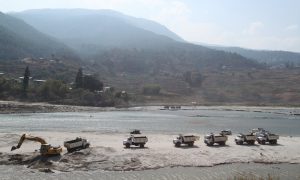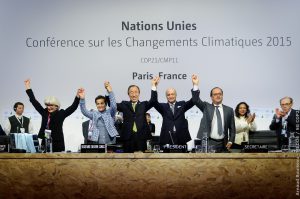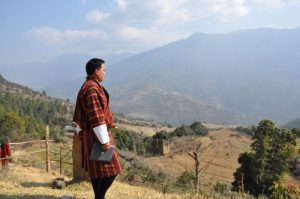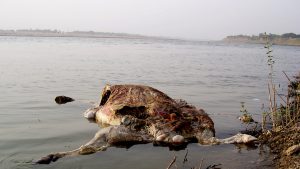After months of rumours, Mauricio Macri’s government has officially confirmed that the controversial China-backed dams in Patagonia will go ahead. However, following complaints by environmental organizations, the original plan will be subject to changes, which could include reducing the dams’ size.
“We took 30 days to review it and we’ve been in conversation with China. Argentina needs the dams in order to provide an important part of the country’s energy, since they’ll account for 4% of the total generated,” said Daniel Redondo, secretary of energy planning at the ministry of mining and energy.
“Now we’re aiming to modify the project to reduce the environmental impact, or at least mitigate it or compensate for it,” Redondo told Diálogo Chino.
The Nestor Kichner and Jorge Cepernic dams will be two of Argentina’s biggest energy projects and would help the country reduce energy imports. However, green groups say they run the risk of impacting the Upsala, Spegazzini and Perito Moreno glaciers, which are located within a UNESCO world heritage site, as well as area’s biodiversity.
The project will take five years to construct at an estimated cost of US$4.7 billion, financed entirely by Chinese banks. The idea was first announced by former president Cristina Kirchner and then revised by Macri.
According to the original plans, the dams will increase Argentina’s energy capacity by 5% and will employ 5,000 people. Around 50 ranches, some 47,000 hectares of land, will be flooded by the dam, which will have 11 turbines installed in its engine room. However, a new high tension transmission line will need to be installed since current infrastructure is only capable of transporting 45% of the energy hat would be produced by the project.
Confirmation of the project comes after Macri held a meeting with Chinese counterpart Xi Jinping in Washington DC, in which the Argentine president underscored the importance of the relationship between the two countries. Macri’s declaration ended months of speculation over whether Sino-Argentine relations would take a new turn under his stewardship. The two countries signed more than 20 deals under Kirchner’s government and upgraded the relationship to an ‘integral strategic alliance’.
Redondo told Diálogo Chino the dam deal was “rushed through” by the previous administration and had an “insufficient” environmental impact assessment. However, he pointed out that he is working with the contractors – Electroingenería and Hidrocuyo and China’s Gezhouba group – to take the project forward.
Sources at Electroingenería told Diálogo Chino they are awaiting information from the government on the required modifications to the project, with the crux of changes expected to consist of a reduction in the dams’ size. However, any change will have to be approved by the banks financing the project – China Development Bank (CDB), Bank of China (BoC), and the Industrial and Commercial Bank of China (ICBC). Another change to the dams could be their names.
Under the terms of the original project, the government would control the dams for 15 years and then hand them over to the provincial government of Santa Cruz, currently headed by the opposition’s Alicia Kirchner, the sister of the ex-president.
Project paused
On assuming the presidency, Macri ordered a halt to construction of the dams and placed the China deals under revision. The uncertainty surrounding the project prompted CDB representatives to visit Buenos Aires to seek assurances from the government – and to remind it that cancelling the dams would also mean terminating an accord to upgrade the state-run Belgrano Cargas rail network.
Only secondary work is currently taking place at the site of the dams as funds had been frozen in the Argentine Central Bank, awaiting Macri’s decision.
According to Ariel Slipak, an economist specializing in China-Argentina relations at the Universidad de Moreno, both domestic and international politics have influenced the process.
“The government has maintained that it needed to have a good, but stricter, relationship with China. China is still Argentina’s second largest export destination,” Slipak told Diálogo Chino but added; “Macri is only questioning the dams because Electroingenería is a company he associates with the ex-president.”
Darío Rodríguez, coordinator of the dam campaign at green group Banco de Bosques (Forest Bank in English), told Dialogo Chino: “The project is messy in a legal and technical sense and the easiest thing to do would be to start again.”
“This project is a death sentence for the Santa Cruz river,” Rodríguez continued, adding that a new environmental impact assessment is required since the original was not properly produced.
The hooded grebe (macá tobiano) spends the winter months in the Santa Cruz river’s estuary, which has been declared an important bird conservation area by the Bird Life International. Green groups say the construction of the dams will have serious consequences not just for this species but for many others.
“We sent a letter to the government asking it to review the project and opening up a process of consultation. Redondo’s statement that they are going to go build the dams is concerning. If they were going to revise the impact study, then they wouldn’t be able to confirm that project would go ahead. It’s contradictory,” Andres Napoli, director of FARN (Environment and Natural Resources Foundation in English), told Diálogo Chino.
The dams were first mooted in 1950. The military regime studied their feasibility in the 1970s but never moved forward with the project. Cristina Kirchner’s government relaunched the dams in 2007 under the names Condor Cliff (Nestor Kirchner) and Barrancosa (Jorge Cepernic) at 35% less than the current costs. Plans were scrapped due to lack of funds.





